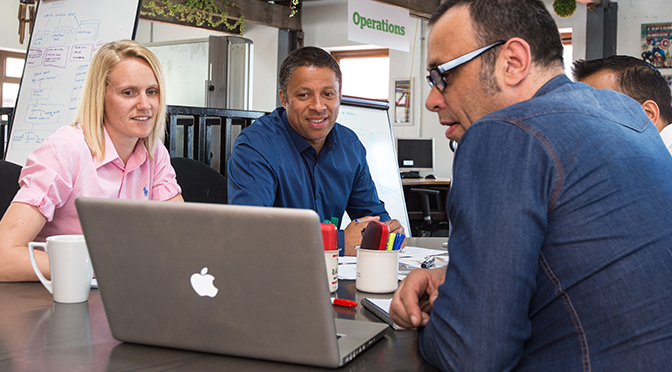The Low A Perspective
The Low A profile is the quintessential “team player” at work. The Low A individual has a team orientation that wants to align with, provide support to and receive support from other team members. As a team player, a Low A profile wants to pitch in and help his or her team succeed. This is manifested in the other qualities exhibited by this profile. To elicit cooperation and harmony, the Low A profile seeks options from others. It is not uncommon for a Low A to seek the ideas of other team members, to poll co-workers (formally or informally), consider alternatives suggested, and to make sure that everyone on the team is on the same page. This can be advantageous to a team as more options often provide more strategies and more individual participation promotes more engagement. But this can be frustrating to the Low A profile on a personal level if the leader or the team always seems to be going in a different direction or is coming to a different conclusion than the individual. While a Low A profile will often subordinate their selections or preferences for the “good of the team,” they want their ideas and contributions to be heard, valued and appreciated as does everyone else. Everyone likes to “win,” wants to have a meaningful say in things and make decisions and that includes Low A profiles.
If you are managing a Low A profile you should also be aware that a lack of objection by a Low A profile does not necessarily represent agreement. It may just mean that the Low A profile has determined that they would rather forego the conflict that may ensue from making their objections known. The Low A profile seeks to minimize conflict. In many cases, a Low A will “bite their tongue” or “take a bullet for the team” rather than vigorously argue their objections if they perceive the conflict level to be too high or that their opinion will not be heard anyway. When this happens, organizations lose valuable input from Low A team members or can feel the effects of passive resistant behavior. Much of this can be avoided by promoting conflict-free idea exchanges. High A and Low A team members need to treat one another (and their ideas) with courtesy and consideration consistently and by dealing with one another in a professional manner. Leaders should enable everyone to participate in discussions and seek ideas from everyone to ensure that no one person or group of persons is dominating meetings or idea flow. Communication should be constructive and supportive. Team members should be encouraged to express themselves, but to do it in a positive, confident and respectful manner.
Low A profiles prefer an option-driven environment so the plans of actions are deemed optimal and benefit the group or organization. Businesses that want to promote a team culture supportive of Low A’s should focus on reaching out and involving others in decision-making, engendering caring about team members, encouraging individuals to be accountable for problems and trying to understand other points of view. When organizations include all those important to a decision, that decision is much more sound and creates the buy in of all. People willfully buying into what the organization desires to do will see higher engagement and performance.




